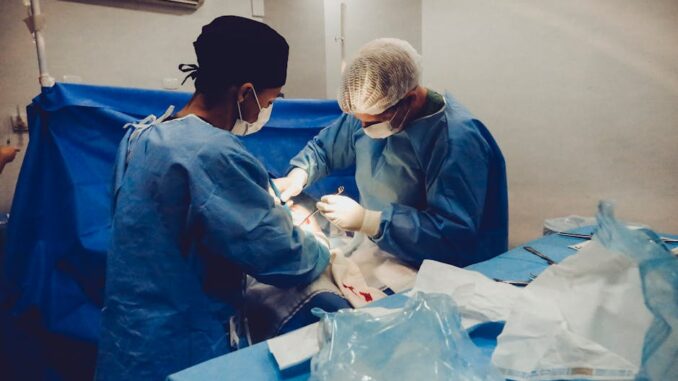
Summary
The FDA has cleared the first stapler designed for single-port robotic surgery, a significant advancement for minimally invasive procedures. This new technology allows surgeons greater control and efficiency, potentially reducing operating time and improving patient outcomes. The SP SureForm 45 stapler, compatible with Intuitive Surgical’s da Vinci SP system, utilizes SmartFire technology to optimize staple line integrity and minimize tissue damage.
Secure patient data with ease. See how TrueNAS offers self-healing data protection.
** Main Story**
FDA Clears First Single-Port Robotic Stapler: A Game Changer?
Well, this is interesting! The FDA just cleared the first stapler specifically designed for single-port robotic surgery. And, who’s behind it? None other than Intuitive Surgical, the company that basically invented robotic-assisted surgery. It’s called the SP SureForm 45 stapler, and it’s designed to work with their da Vinci SP system. The promise? More precise, efficient surgery and, ultimately, better results for patients. But does it live up to the hype?
So, What’s Single-Port Robotic Surgery All About Anyway?
Think of traditional minimally invasive surgery – you know, a few small incisions. Single-port takes that to another level. Instead of multiple incisions, it’s just one. Through that single incision, surgeons insert a high-definition 3D camera and up to three wristed instruments, including this new stapler. The surgeon controls everything from a console, getting a magnified, 3D view of the surgical site. The goal here is to really minimize scarring, dial back the post-op pain, and get people back on their feet faster. You can see the appeal, right?
The Da Vinci SP System and the New Stapler: A Perfect Match?
The da Vinci SP system is designed to get into those tricky, narrow surgical spaces, complementing Intuitive’s existing multi-port systems. It’s built to allow internal triangulation of the instruments. What does that mean? Basically, it reduces the chances of instruments bumping into each other and allows for more dexterity in tight spaces.
Now, the SP SureForm 45 stapler slots right into this system. The big advantage is that it gives surgeons even more control during stapling. No need for an assistant to fire the stapler, which streamlines the whole process and potentially shaves off valuable time in the operating room. And, time is money, as they say.
SmartFire Technology: The Key to Enhanced Safety?
Here’s where things get really interesting: Intuitive’s SmartFire technology. This isn’t your grandpa’s stapler, that’s for sure. SmartFire constantly monitors tissue compression both before and during staple firing. This is really important. The idea is to ensure the staple line is solid and minimize the risk of tissue damage. Because it can adjust in real-time to different tissue thicknesses it is a crucial safety feature, it can really boost the safety and effectiveness of the stapling process. It’s like having a built-in safety net.
Where Can You Use It? And Where’s It Headed?
Right now, the da Vinci SP system is approved in the U.S. for urologic, thoracic, colorectal, and transoral otolaryngology procedures. Though, just to be clear, this new stapler isn’t yet cleared for transoral otolaryngology.
On a global scale, the da Vinci SP platform has also been greenlit for various surgical uses in Europe, Japan, Korea, and Taiwan. The SP SureForm 45 stapler just adds another tool to Intuitive Surgical’s already impressive lineup of stapling instruments, which also includes those compatible with their multi-port da Vinci 5, Xi, and X systems.
What Does This Mean for the Future of Surgery?
This FDA clearance is a big deal. It really feels like a significant step forward for single-port robotic surgery. You know, I remember when I first saw the da Vinci system in action; it felt like something out of a sci-fi movie. This stapler feels like another step in that direction. With enhanced precision, efficiency, and control, it has the potential to really shake up minimally invasive procedures.
I think as it becomes more widely available, patients can expect smaller incisions, less pain, and faster recovery times. And, who wouldn’t want that? It’s a good reminder of the incredible progress being made in medical technology and how it’s transforming healthcare, even if long-term effects remain to be seen. As of today, April 13, 2025, this is what we know. But let’s be real, medical technology is constantly evolving, and I wouldn’t be surprised if we see even more advancements in single-port robotic surgery down the line.


The SmartFire technology sounds like a game-changer. Considering its real-time adjustments for tissue compression, how might this advance impact surgical training protocols, potentially reducing the learning curve for complex procedures?
That’s a great point! The potential for SmartFire to shorten the surgical learning curve is exciting. Perhaps we’ll see more simulation-based training incorporating this technology to better prepare surgeons for the nuances of real-time tissue adaptation. This could lead to faster adoption and improved outcomes.
Editor: MedTechNews.Uk
Thank you to our Sponsor Esdebe
Given the nuanced capabilities of SmartFire technology in adapting to varying tissue thicknesses, how might this impact long-term patient outcomes concerning staple line integrity and potential complications like leaks or bleeding?